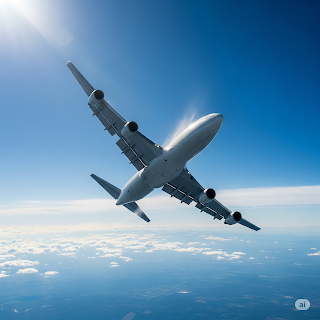Key Takeaways 📌
📦 Climate change is intensifying clean air turbulence (CAT), especially at cruising altitudes.
📦 Jet streams are becoming stronger and more erratic due to rising global temperatures.
📦 Airlines may face longer routes, higher fuel costs, and increased maintenance expenses.
📦 Passenger safety is not at serious risk, but in-flight injuries could rise without precautions.
📦 Climate-resilient aviation policies and improved forecasting tech are crucial for the future.
🌍 A Rough Ride in the Skies
Have you noticed flights getting bumpier lately, even in clear blue skies? You're not alone. Recent scientific studies suggest that climate change is making mid-air turbulence more frequent and severe—especially a type called Clean Air Turbulence (CAT). This invisible menace doesn’t appear on radar, making it harder for pilots to detect and avoid.
✈️ What is Clean Air Turbulence?
Clean Air Turbulence is a type of turbulence that occurs in clear skies, usually at high altitudes (30,000–40,000 feet) where commercial planes cruise. Unlike turbulence caused by storms or mountains, CAT is often invisible and sudden, giving little to no warning to pilots and passengers.
🔬 What’s the Link Between Climate Change and Turbulence?
1. Jet Stream Acceleration
-
The jet streams—fast-moving air currents in the upper atmosphere—are driven by temperature differences between the equator and the poles.
-
Climate change is warming the Arctic twice as fast as the rest of the world (a process called Arctic Amplification), weakening the temperature contrast.
-
Paradoxically, this can cause jet streams to meander and intensify, leading to more unstable air patterns and greater wind shear, which is the main cause of CAT.
2. Increased Wind Shear
Wind shear refers to sudden changes in wind speed and direction, often at boundaries between different air masses. As global warming alters atmospheric circulation, vertical and horizontal wind shears are becoming more intense, especially over the North Atlantic—the busiest transatlantic air corridor.
📊 Scientific Evidence: What the Studies Say
-
A 2023 study by researchers at the University of Reading found that severe CAT has increased by 55% over the North Atlantic since 1979.
-
Moderate turbulence rose by 37%, and light turbulence by 17%, in the same region.
-
The research attributes this trend directly to increased CO₂ levels and warming upper atmosphere layers.
🧳 How Does This Impact Air Travel?
1. Passenger Safety and Comfort
-
Sudden jolts can cause injuries to unbuckled passengers and crew.
-
Flight anxiety and motion sickness could become more common.
2. Operational Costs for Airlines
-
Detours to avoid turbulence increase fuel consumption.
-
More turbulence means more wear and tear on aircraft components.
-
Airlines may face higher maintenance and insurance costs.
3. Scheduling and Delays
-
Rerouting flights to avoid turbulent zones can cause delays, missed connections, and increased carbon emissions, ironically feeding back into the climate cycle.
🌐 Global Hotspots of Turbulence
-
North Atlantic Ocean: Transatlantic flights face the most severe increase in CAT.
-
Asia-Pacific Routes: Particularly turbulent due to powerful monsoon systems.
-
Jet Streams near the Himalayas and Rocky Mountains are also becoming more unstable.
🛰️ Can Technology Help?
Yes—but with limits.
✅ Real-Time Weather Monitoring
Satellites and radar systems are improving, but CAT remains hard to detect because it occurs without visual or radar indicators.
✅ AI & Machine Learning
AI can predict turbulence zones based on flight path data, jet stream behavior, and past turbulence events. Apps like Turbli and platforms used by airlines are getting better at alerting crews in advance.
🌱 The Way Forward: Solutions and Policy
1. Sustainable Aviation Fuels (SAFs)
Using low-carbon fuels could reduce aviation’s contribution to global warming.
2. Greenhouse Gas Mitigation
Global efforts to reduce emissions—through the Paris Agreement and national pledges—can slow down the jet stream disruption.
3. Aviation Forecasting Upgrades
Investment in high-resolution atmospheric models can improve turbulence forecasting and planning.
🤔 Final Thoughts
While turbulence is a normal part of flying, climate change is making it less predictable and more dangerous, particularly with the rise in clean air turbulence. The aviation industry must adapt, not just for smoother flights, but for a more sustainable future. Whether you’re a frequent flyer or an occasional traveler, buckle up—climate change is already reshaping how we fly.

No comments:
Post a Comment